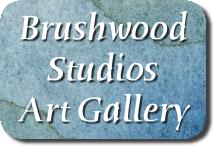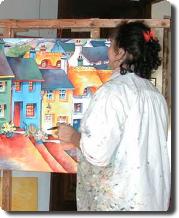Jo-Anne Yelen: Born in 1959 in South Africa, Jo-Anne grew up in a remote and beautiful rift valley in an otherwise arid landscape. Her parents ran an adventure camp for city children and Jo-Anne ran wild throughout her childhood. Having decided, due to the remoteness of their home, to home-school her children, Jo-Anne’s mother, an artist, would set work for them and then become lost in her latest painting. The children could then sneak off to less onerous pursuits. As Jo-Anne and her brother grew older their schooling, if not their education, became more routine as they studied under the guidance of correspondence colleges. In 1976, having finally decided that they could no longer manage in a system that included apartheid and with no sign of change evident they made the difficult decision to leave South Africa and return to the home of their ancestors, Ireland. Knowing very little of Ireland Jo-Anne’s family roamed around the country in search of a place to call home and, eventually, in 1978, they settled in the village of Sneem where they built a studio where the family passion for the arts could be pursued. Jo-Anne, then 18, began to dedicate here energies seriously to painting and, somewhat less seriously, to shoestring travel. Under the expert tutelage of her mother M.A.Muller, now at last teaching where her true interests lay, Jo-Anne rapidly began to develop a style all her own that has over the years come to be known as Jo’ism. During the past 25 years Jo-Anne has followed her compulsion to paint, through the growth of her family (two boys), and continues to gather enthusiastic patrons from all walks of life and every continent. Her work is instantly recognizable no matter how far-afield it may be found and, due to its unique style, appeals to people on many levels. Investment collectors buy Jo-Anne's paintings because they actually like them. All Jo-Anne’s paintings are produced with the finest quality materials. Canvass is heavy linen or cotton artists grade canvas - Watercolour paper is 300 lb St Cuthbert’s Mill Waterford Saunders - Paints are Windsor and Newton Selected list only and are the most permanent pigments ever produced for artists. Jo-Anne’s work hangs in private collections all over the western world and the middle east, including the Anne Stevens Collection (Ford USA), and has recently been added to the great collection of art works in the castle of the zu Loewenstein family where she hangs in the company of old and modern masters. ----------- On First arriving in Ireland a virtual refugee in the bleak winter of 1977 I lived with my family for some months in a run down rented caravan on a windswept lot in Swords Co. Dublin, as it was then! Having just emigrated from a tropical paradise my entire family were in a state of climatic shock and began suffering somewhat from depression. I kept noticing artworks in public places which, while expertly rendering the environment and climate (stark Skeltons spring to mind), were doing little to remedy my mood. I therefore took a conscious decision that any painting I produced must, as part of its purpose, uplift the viewer and evoke a positive response from the psyche, no matter how depressed. I have always held true to this fundamental, notwithstanding the natural style changes and evolution that an artist must go through to maintain their own interest and, thus, a freshness in their work. Very simplified: I have throughout my artistic life made an objective as well as an intuitive study of colours and their relationships, compliments and contrasts. How to paint with vital and vivid colour, yet still allow the tones and hues to live harmoniously together on the canvas. - Jo-Anne Yelen ----------- Interview with Jo-Anne Yelen - May 2009 Why do you paint? 'Because I have to. If I don't I become a bear with a sore head and no one can live with me.' That sounds to me like an addiction. 'You may be right. I am driven. If I am not painting then I do have to be doing something.' So why painting in particular? 'When I say something I mean I have to be doing something in the art line, it may be sketching or water colours or oils or just doodling for ideas on a scrap of paper.' So what else interests you? 'Well, obviously my children and my extended family who give me a lot of joy and aggravation. Of course I don't just paint for the sake of painting. Painting is after all a form of expression. For those of us who find words difficult, art is a wonderful medium for expressing our feelings. It is also perhaps important for the viewer, particularly those who lean toward the left brain, to experience communication in a different way. Having said this, I should perhaps add that early on in my career I made a conscious decision not to use art as an outlet for my neuroses. People don't need to be hanging my neuroses on their walls.' So if painting is a primary form of expression for you how do you avoid this? 'I don't paint when angry or upset.' So you feel happy most of the time? 'Well, I suppose that practicing this has lead to the act of painting being a trigger for getting me into a happy zone. As I squeeze the colours out onto the pallet the joy begins to rise in me and my troubles fade into the background.' So this could be likened to the endorphin rush that is obtained by athletes when they train. 'Yes, I suppose so. I am probably addicted to painting and I am certainly exhausted when I have finished a day's painting.' Do you paint every day? 'No, but I paint most days. I would say that I put in an average working week on painting alone. There are times when I may not be able to work (paint) for days on end due to other commitments, but I would tend to make up for those lapses by bingeing afterward. Different people work in different ways. Some personalities work in fits and starts, some need a deadline to motivate them, while others work with routine. I would prefer to work steadily every day, the way a musician might who needs to stay in practice. After long breaks I find it difficult to get the flow going again, although sometimes I have found it useful to go traveling with my sketchbook in order to find and record new themes and ideas.' Are ideas difficult? 'Some people seem to find this. I find that one painting builds on another and that I am planning the next painting while working on the current one. My style seems to change in increments and, although I don't usually feel the process, when I look back over a period of years the differences are very obvious.' But what about a change in style like your development of thruism? 'Thruism actually came about because of a five or six month break in my workflow due to my son Andy getting ill. I had painted some backgrounds onto canvasses, but not begun proper work on the paintings, and when I came back to them I saw the background patterns in a different light. I realize now looking back that the seeds of thruism were already there in some of my prior works, like, for instance, my doodle-fish series and my desert caravans, as well as in some of the paintings I had done of my kids' music room, but without the break who knows if it would have developed in the same way.' OK I have got a good idea where you are coming from in your art. What about other artists, what is your opinion of contemporary art? 'Oh God, I wouldn't have a clue. That's a loaded question and could get me into trouble.' Pause 'All right. I'll be brave and answer. One is tempted to be cynical and think right away about the Turner Prize syndrome. Where artists will try any gimmick or shock-tactic to achieve their fifteen minutes of fame. There are though, so many ordinary hard working artists who have a genuine calling to express meaning and beauty, who work quietly away in their closets, often without any recognition of their value by the media, which seems to love the delinquents. I sometimes wonder what the actual job of the critic is.' So you have a problem with the media? 'Well, not really. I suppose we get the media we deserve. It just seems to me that the media, as it perceives itself as the arbiter of merit, will choose controversy, and seems to fete people who somehow have the time, to collude with the paparazzi. Where some of these artists find the time to actually paint I don't know. I have never actually had negative reviews from critics. They have been on the whole good to me, but the art world does sometimes seem to be a little hysterical, a little caught up in the whole personality cult aspect of the arts, rather than the quality of works produced and their value to posterity as stand alone pieces. If you want a proper bit of controversy you should rather read my niece Diana's art blog. She is not afraid to express her sometimes acerbic views on the current art scene.' END CLICK HERE FOR REFERENCED ARTICLE BY DIANA
SUBSCRIBE TO OUR NEWSLETTER AND MAILING LIST
------------ |
|||||||||||||||||||||||||||||||||||||||||||||||||||||||||||||||||||||||||||||||||||||||||||||||||||
|
|||||||||||||||||||||||||||||||||||||||||||||||||||||||||||||||||||||||||||||||||||||||||||||||||||

